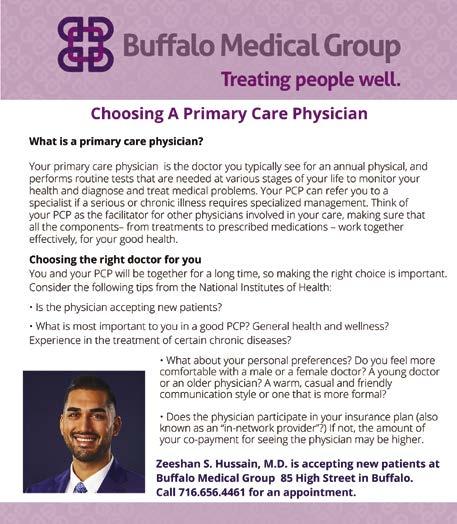
2 minute read
Preserving fitness............................................. Daniel Curry
Preserving fitness
And even making gains
BY DANIEL CURRY
Physical activity is critical to optimal health at any age. Among other benefits, regular exercise promotes increased mobility and balance, improves mood and sleep, and reduces anxiety and injury. It is an incredibly important part of life. Having an exercise routine can help with things such as better balance, increased mobility, and wider flexibility. As we age, it’s more important than ever to maintain fitness routines—or start one.
Forward Fitness is a local exercise studio that focuses on fitness programs for older adults. Owner Jill Bronsky, M.S., a Certified Personal Trainer and Functional Aging Specialist, says maintaining physical fitness is crucial for reducing fall probability, improving function and injury recovery times, and maintaining independence.
Bronsky began focusing on elder fitness about twenty-five years ago when she noticed the industry lacked programs for a population that arguably needed them most. “Over time, our strength, flexibility, and mobility decrease as part of the aging process,” says Bronsky. “However, [with exercise], we are able to reverse a lot of those trends. Hire a personal trainer, do a class, do anything that will help encourage mobility, balance, and flexibility. Things that will help make everyday movements easier.”
It’s never too late to focus on physical activity because any amount of exercise at any age is beneficial—and always better than none at all. “People say, ‘Oh I’m in my seventies or eighties. It’s too late for me to start any fitness work,’ and that is simply not true,” Bronsky says. “Anything that you do is going to help.”
In Bronsky’s classes, participants work muscles that might get neglected in everyday life. The result is increased range of motion and strength. “One of my favorite parts of in-studio classes is setting up an obstacle course,” Bronsky says. “This allows for participants to practice things stepping over and going around things.” This kind of functional fitness can prepare older exercisers for practical obstacles in daily life. To make classes more accessible, Bronsky offers some virtually to allow participants to join in from their living rooms. “I really didn’t think that a lot of people would want to do it, but with the pandemic, a lot started to hop on the bandwagon,” Bronsky says. “Especially with Buffalo winters, it’s challenging for people to get out of the house.” It’s easy to focus on the physical benefits of exercise, but exercise has myriad mental benefits as well, including better memory and sleep, reduced anxiety, and increased alertness, and confidence. Of the latter, Bronsky says, “People realize that they can lift their legs up higher, they can get around things a little more quickly. It is amazing seeing the improvement.” What are you waiting for? FY







